It shouldn’t come as a surprise to anyone; no matter how much we clean, tidy, or organize, chores never seem to end. Dishes pile up, laundry waits impatiently in the basket, and pet hair somehow finds its way back onto freshly vacuumed floors. We’re so used to this, we would be surprised if this doesn’t happen anymore. No, not surprised, shocked, For many of us, weekends disappear under the weight of housework, and even weekdays are dotted with small but constant tasks that eat into our free time and our energy levels. But what if technology could quietly take over some of that burden? Can it, you ask dejectedly? Oh yeah, In 2025, smart home devices are no longer futuristic toys—they’re practical tools designed to reclaim your time and make daily life smoother.
The beauty of smart home hacks lies in their ability to tackle chores in the background. Think of a robot vacuum sweeping your floors while you’re at work, or a smart dishwasher that not only washes but also doses the exact amount of detergent needed, saving both effort and waste. Picture your lights switching off automatically when you leave the room, your coffee maker starting up before you even get out of bed, or your pets fed on schedule without you rushing home from the office. These small automations add up, shaving off minutes here and hours there—until suddenly, your home feels easier to manage and less demanding. How does it feel getting that energy back? Feels great.
Real-world users are already seeing the difference. In online forums like Reddit’s r/smarthome, people regularly share how a simple robot vacuum has given them back two to five hours a week, or how a smart plug transformed their morning coffee routine into a stress-free ritual. Parents mention how voice assistants like Alexa make bedtime easier by turning off lights and setting reminders without lifting a finger. Pet owners praise automatic feeders for bringing peace of mind during long workdays. While there isn’t a single scientific study that calculates exactly how many hours smart devices save, the lived experiences of thousands of households paint a consistent picture: automation lightens the load.
More importantly, these hacks aren’t just about saving time—they’re about reducing mental clutter. When repetitive chores get automated, your brain is freed from the constant cycle of remembering, checking, and managing small details. Instead of worrying whether you left the lights on or if the dog’s bowl is empty, you can focus on work, family, or even a bit of much-needed rest. We all need to straighten our backs from time to time, you know.
In this guide, we’ll explore smart home hacks that truly reduce chores—the ones that offer real-world benefits, not just flashy features. From cleaning floors and feeding pets to simplifying laundry and lighting, these tools are designed to blend seamlessly into your daily life. By the end, you’ll have a clear roadmap for turning your home into a space that doesn’t just shelter you, but also supports you—quietly, efficiently, and automatically.
Top Smart Home Hacks That Cut Chores
1. Robot Vacuums & Mops – Floors Clean Themselves
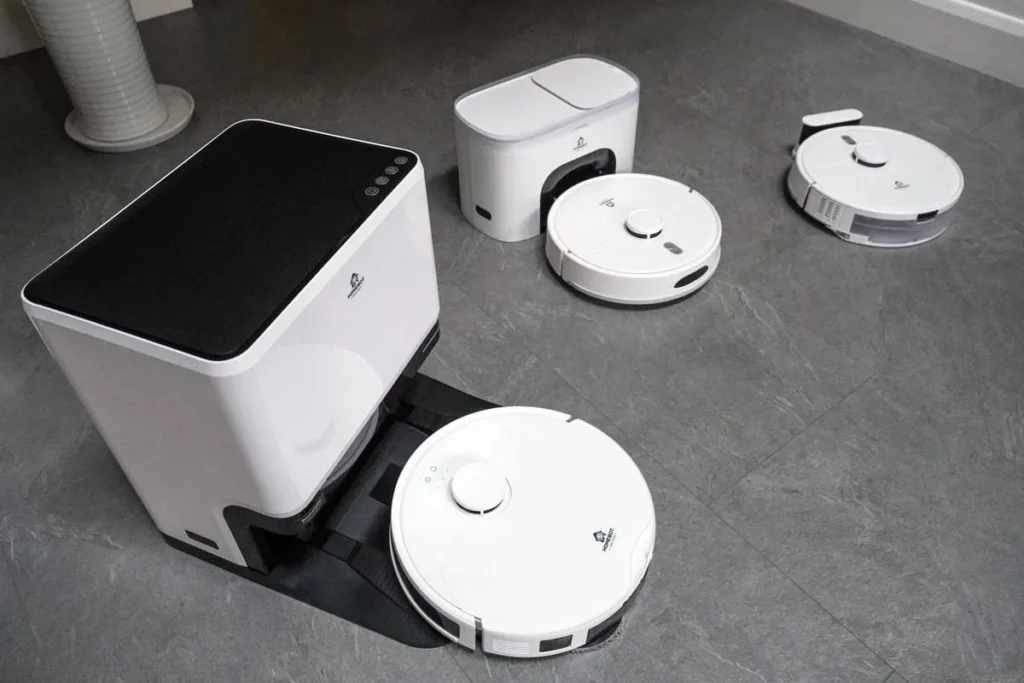
Few smart devices save as much time as robot vacuums and mops. For busy households, they’re nothing short of a revolution. Instead of spending an hour pushing a vacuum around, you can schedule a robot vacuum to do the work daily—even while you’re out of the house. Modern models like the iRobot Roomba Combo j7+ or Roborock S8 Pro Ultra not only vacuum but also mop, empty their own dustbins, and return to their charging docks without supervision.
For pet owners, these gadgets are lifesavers. Shedding fur, tracked-in dirt, and crumbs are handled automatically, keeping floors clean between deeper manual cleanings. One Reddit user put it perfectly: “I don’t remember the last time I worried about dog hair—it’s just gone by the time I get home.” No more getting frustrated with your furry friend.
The benefit isn’t only time saved (users report gaining back 2–5 hours a week) but also consistency. Unlike humans, robot vacuums don’t get tired or skip corners. They’re made to do the same task every day. With mapping technology, they learn your home’s layout, avoid obstacles, and cover areas methodically. Some even adjust suction when moving from hardwood floors to carpets.
Robot mops add another layer of convenience. Instead of dragging out a mop and bucket, you can let the device tackle spills, sticky kitchen floors, or regular maintenance cleans. Paired with scheduling, your kitchen or living room can stay spotless with little intervention.
Of course, like humans, they’re also not perfect. Reviewers often note that cords, socks, or clutter on the floor can still trip them up. But while they don’t replace a deep clean, they drastically cut down on the frequency and intensity of manual floor cleaning. And that’s a lot by any standard.
For most households, a robot vacuum or mop is the single most impactful smart home hack for reducing chores. It doesn’t just clean—it eliminates one of the most repetitive and time-consuming tasks from your weekly routine. What’s more? A clean house to come back to without a care in the world.
2. Smart Dishwashers & Laundry Machines – Less Guesswork, More Free Time
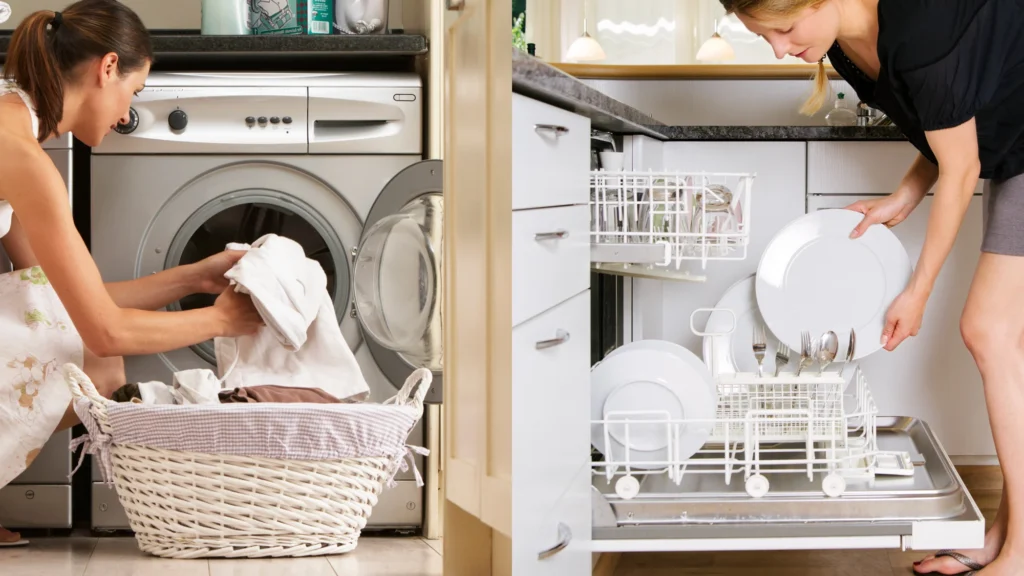
Washing dishes and doing laundry are two chores that never seem to end. They keep piling up, much to your dismay and frustration. But smart dishwashers and washing machines are quietly transforming the way people manage them—making both tasks faster, smarter, and less hands-on.
Take smart dishwashers, for example. Modern models from brands like Bosch, LG, and Samsung don’t just wash dishes—they auto-dose detergent, optimize water use, and notify you via app when a cycle is finished. No more running to the kitchen to check if it’s done. Many even allow remote start, so you can run a load while you’re out and return home to clean dishes. For families, this small shift is huge. One Amazon reviewer wrote: “It’s such a relief to start the dishwasher from my phone when I realize we forgot before leaving for school drop-off.”
Smart washing machines go a step further. They can detect load size, fabric type, and soil level, then automatically choose the best wash cycle. Some models dispense the exact amount of detergent needed—cutting waste, eliminating the guesswork, and saving you an extra trip to the market to fetch more. Others link to your smartphone, allowing you to check cycle progress, get maintenance reminders, and even receive alerts when it’s time to transfer clothes to the dryer.
The real chore-reducing power comes from automation + reminders. Are you forgetful about doing laundry? Did your kid just tell you they don’t have a fresh pair of undies anymore to remind you to take out the laundry? A notification nudges you before clothes start smelling damp. Hate measuring detergent? We get it, not everyone likes to be in a lab. Auto-dosing takes it off your plate. And because these machines optimize wash settings, they also cut down re-washing due to poorly cleaned clothes—another hidden time-saver.
In forums like r/appliances, users often say smart laundry machines are more than a gimmick. One buyer explained how their washer “basically trained me to do laundry better” because it handled cycle choices they used to mess up. Another mentioned saving nearly an hour a week by avoiding rewashes and not having to babysit machines.
While these appliances require a bigger upfront investment than smaller smart gadgets, they’re some of the most impactful in the long term. They don’t just save time—they make the entire process less stressful, leaving you with clean clothes and dishes without constant supervision.
3. Voice Assistants – Hands-Free Shortcuts for Everyday Tasks
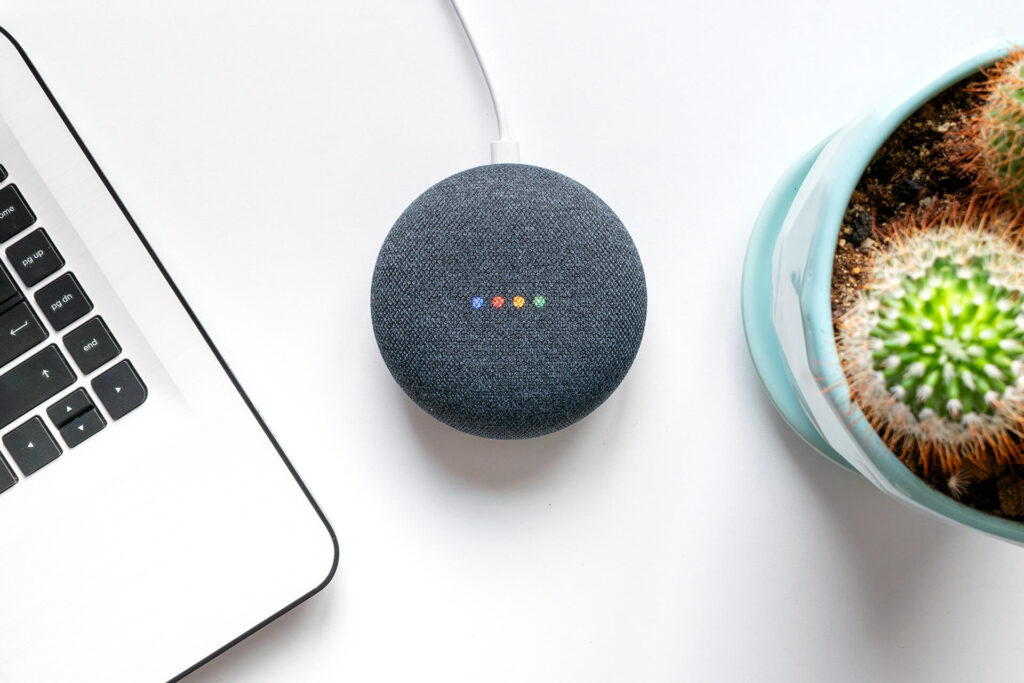
If there’s one smart home hack that feels almost magical, it’s using a voice assistant like Amazon Alexa, Google Assistant, or Apple’s Siri. While they don’t physically scrub your floors or wash your dishes, they reduce the dozens of tiny “micro-chores” that eat into your day—tasks like switching off lights, setting timers, or adjusting the thermostat.
Think about how often you pause what you’re doing just to flip a switch, check the oven, or set a reminder. Voice assistants make those interruptions disappear. Instead of drying your hands to grab your phone, you can just say, “Alexa, start a 20-minute timer for the laundry” or “Hey Google, turn off the kitchen lights.” It’s quick, seamless, and keeps you moving without breaking your flow.
Parents especially highlight the benefit. Many mention how Alexa routines simplify bedtime: “When I say ‘Alexa, bedtime,’ it shuts off all the lights, locks the smart plug for the TV, and turns on the kids’ nightlight.” That routine saves multiple steps every night. We can’t guarantee that the kids are happy with this, but parents don’t fret, it’s for their own benefit. For busy mornings, voice assistants can even start the coffee maker (via a smart plug), check the weather, and remind you about school lunches—all without lifting a finger. Ah, the mundane taken care of.
Another hidden advantage is accessibility. Elderly users or those with mobility challenges often find voice assistants invaluable for reducing physical strain. A Reddit user in r/smarthome shared how his parents love being able to control lamps and appliances from bed without walking across the room. What looks like a convenience for some is a real chore-reducer for others.
The best part is that voice assistants improve over time. With routines and smart home integration, you can combine multiple actions into one phrase. “Alexa, cleaning mode” could turn on all the lights at full brightness, play upbeat music, and start the robot vacuum—instantly setting the stage for a housework session. No more feeling dull and out of vigor, crack those knuckles and get on with it.
While it may not sound as dramatic as a robot that vacuums your home, the time saved in small increments adds up. Over a week, those little hands-free shortcuts can free up hours that would otherwise be lost to repetitive tasks.
4. Smart Plugs & Energy Monitoring – Automating Everyday Appliances
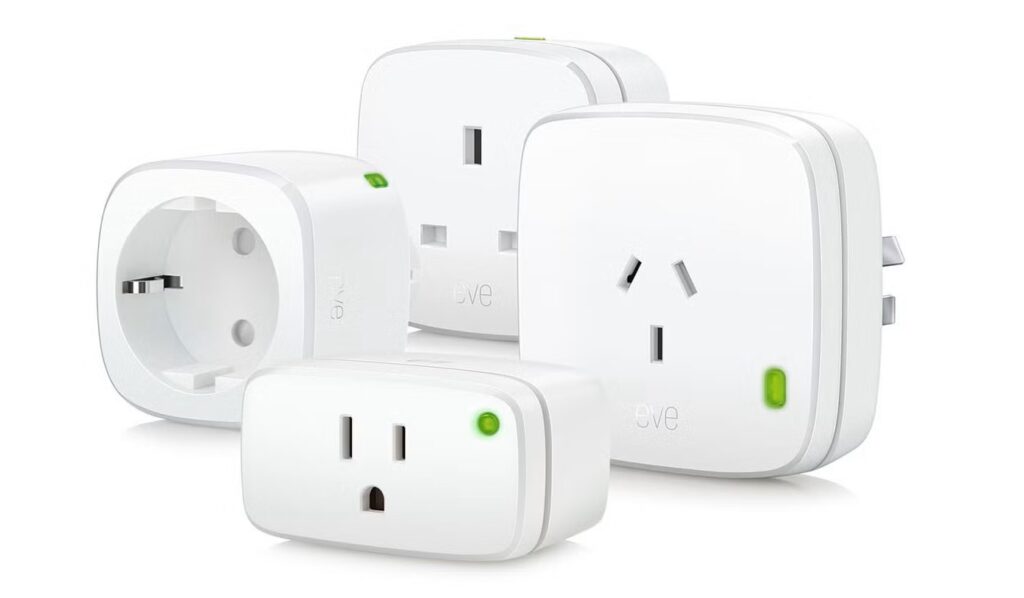
Not every home appliance is “smart” by default, but a simple smart plug can change that instantly. By plugging everyday devices—like coffee makers, fans, dehumidifiers, or even irons—into a smart plug, you gain control over them from your phone or voice assistant. That means you can turn devices on and off remotely, schedule routines, or even check if you accidentally left something running. Panic attacks, stay away.
Take the morning rush, for example. Instead of fumbling with buttons, your coffee maker can start brewing automatically at 7:00 a.m. thanks to a scheduled smart plug. Or imagine realizing you left the iron plugged in while driving to work. Instead of panicking, you can switch it off from your phone with a single tap. These little automations don’t just save time—they reduce stress and a trip to rehab, if you know what we mean.
Energy monitoring adds another layer of value. Many modern plugs (like the Tapo P110 or Emporia Smart Plug) provide real-time data on how much power each device consumes. This isn’t just about lowering electricity bills—it highlights hidden chores. For example, one Reddit user mentioned how their smart plug revealed their dehumidifier was running unnecessarily for hours. By adjusting its schedule, they cut both energy waste and the need to constantly check on it.
Households also use smart plugs for seasonal chores. One Amazon reviewer shared how they set their holiday lights to a timer so they no longer had to remember to turn them off at night. Others automate pet-related gadgets—like running an aquarium filter or heat lamp on a consistent schedule—so they don’t have to manage it manually.
Of course, smart plugs aren’t perfect for every device. High-load appliances like heaters or AC units need plugs rated for heavier amps. But for most everyday tasks, they’re inexpensive, easy to set up, and highly effective at removing repetitive steps from your daily routine.
In short, smart plugs are the unsung heroes of the smart home world. They may not be in the face flashy, but by quietly automating ordinary appliances and keeping energy use in check, they eliminate a surprising number of chores you didn’t even realize were taking up your time.
5. Smart Lighting Hacks – Visibility, Routines, and Less Mental Load

Okay, we know this makes a lot of hoopla on TV and social media, but this upgrade is worth every penny. Smart lighting isn’t just about setting the mood—it also helps cut down on chores and makes cleaning easier. With adjustable brightness, color temperatures, and automation, smart bulbs and lamps take over small but constant tasks you’d normally handle manually.
One of the biggest advantages is visibility during cleaning. Switching your lights to a bright, cool-white setting (around 4000–5000K) makes dust, streaks, and crumbs far more visible than under warm lighting. Many homeowners set a “cleaning mode” routine where all the lights in the house shift to maximum brightness at once. As one reviewer put it, “I never realized how much dirt I was missing until I cleaned under daylight settings.” That means, no dirty spots are forgiven.
But visibility is just one piece. Smart lights also reduce the micro-chores of turning lights on and off throughout the day. Instead of walking around the house before bed, you can simply say, “Hey Google, goodnight,” and watch as every light turns off at once. Some users even schedule gradual dimming in the evening to signal bedtime, creating a consistent routine that removes the need for reminders.
Parents find smart lights especially handy. A Reddit user described how they use different colors as visual cues for their kids: blue light means it’s time to start homework, soft amber means winding down for bed. This eliminates nagging and keeps routines smoother.
Seasonal chores also benefit. During holidays, smart lights can sync with timers so you don’t have to worry about turning decorations on or off. For safety, outdoor smart lights can be scheduled to illuminate paths at night, saving you from the repetitive task of flipping switches.
The hidden benefit is mental relief. Now that’ the biggest advantage one can get. When lights take care of themselves—adjusting based on time of day, occupancy, or even weather—you free up brain space otherwise spent remembering small details. It’s not just about the chores you physically do, but about eliminating the ones you’d normally think about doing.
To shed one final light on it, smart lighting goes beyond ambiance. By automating visibility, routines, and even family schedules, it chips away at dozens of small tasks, leaving you with a home that quietly manages itself.
6. Automated Pet Feeders & Water Fountains – Stress-Free Pet Care
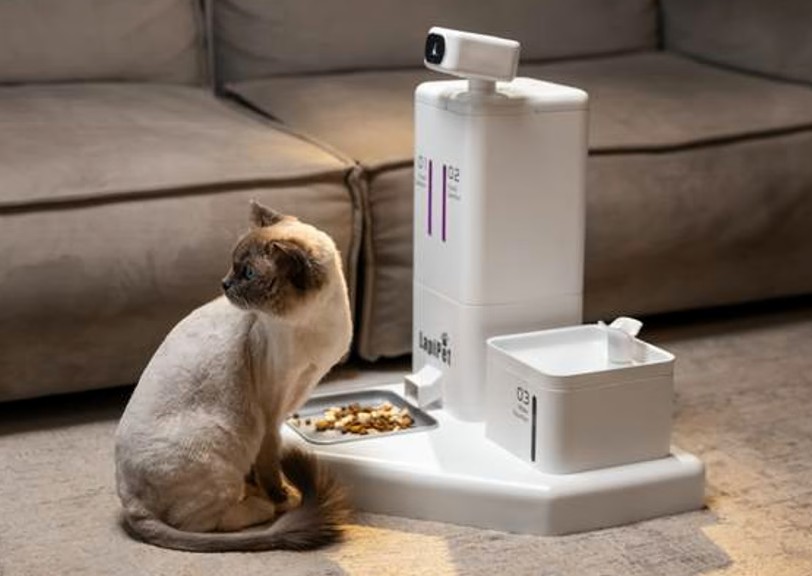
For pet owners, daily feeding and refilling water bowls can feel like painfully never-ending chores. Sure, you love cuddling with your companion, but filling up bowls at midnight when their appetites kick in is not something anyone looks forward to. Smart feeders and water fountains take this burden off your plate, ensuring your furry friends are fed on time and stay hydrated—even when you’re not home.
Smart pet feeders can be programmed to dispense food at specific times of the day, in precise portions. That means no more rushing home at lunch to feed the dog, or waking up early on weekends because your cat demands breakfast. Many models, like the PetSafe Smart Feed or Petlibro Automatic Feeder, connect to your phone, letting you start a feeding remotely if your schedule changes. Some even feature backup batteries to keep running during power outages—a huge relief for pet owners who travel frequently.
You may have noticed, but we’ll say it for you, the biggest advantage here is consistency. Pets thrive on routine, and a smart feeder ensures meals happen on schedule, whether you’re home or not. A user review on Amazon summed it up: “I don’t stress about late meetings anymore—my cat gets fed at 6 p.m. no matter what.” Beyond convenience, feeders also help with portion control, preventing overfeeding and promoting healthier diets.
Smart water fountains are equally transformative. Unlike traditional bowls that need frequent refilling, these devices keep water circulating and filtered. This not only keeps it fresh and appealing to pets but also saves you from checking and refilling multiple times a day. Some models even send alerts when the water is low or when the filter needs changing.
On Reddit’s r/pets forum, owners often share how smart fountains reduced their chore load and even improved their pets’ health. One dog owner noted, “My pup drinks more water now, and I refill the tank every few days instead of five times a day.”
While these gadgets don’t replace the bond of personally caring for your pets, they remove the constant repetition of feeding and watering chores. Instead of daily stress, you get peace of mind knowing your pets are cared for—even if you’re late, busy, or away for the weekend. No need to feel guilty for not being there.
7. Smart Irrigation Systems – Automating Lawn & Plant Care
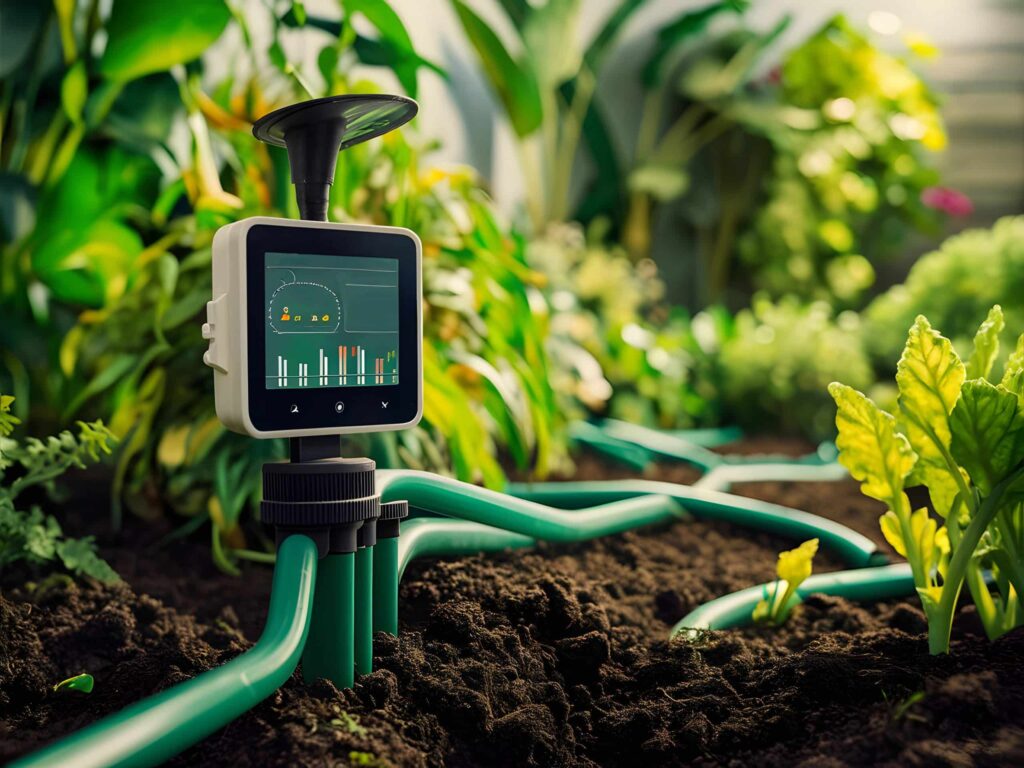
Watering the lawn, garden, or even indoor plants is one of those chores that feels small but adds up in time, effort, and sometimes frustration. Smart irrigation systems take that repetitive task off your shoulders by handling it automatically and intelligently.
Devices like the Rachio Smart Sprinkler Controller or Orbit B-hyve allow you to schedule watering sessions for your yard or garden, but they go further than simple timers. These systems pull in real-time weather data to adjust watering automatically. If it rains, they skip the cycle. If there’s a heatwave, they water a little longer. This not only saves you from having to constantly monitor conditions but also cuts down on wasted water.
Indoor plant lovers are also getting in on the trend. Smart plant watering systems, like Moistenland or Blumat digital setups, can deliver precise amounts of water to potted plants. One reviewer mentioned how their system was a lifesaver during vacations: “I came back after two weeks and every plant was thriving. Normally, I’d have to ask a neighbor to water.” We all know how that story goes. Darn it, I forgot.
The biggest time-saver is eliminating manual checks. Instead of wondering whether your soil is dry or rushing home to water before work, sensors and apps give you updates right on your phone. Some systems even send notifications when your plants need attention, making the process nearly foolproof.
Users frequently highlight peace of mind as the biggest benefit. A Reddit gardener wrote: “I don’t worry about my lawn drying out in summer anymore—the system just handles it.” Others note cost savings, since smart irrigation optimizes water use, lowering utility bills.
While setup requires some upfront effort—especially for outdoor sprinkler systems—the payoff is long-term convenience. Once in place, smart irrigation turns one of the most repetitive chores into an automated background task.
For homeowners with lawns or plant collections, this hack is one of the most satisfying. It doesn’t just reduce chores—it ensures your greenery stays healthier and more vibrant with minimal effort on your part. Lush and green without the upkeep, you’re in a wonderland, baby.
8. Smart Trash Solutions – Taking the Hassle Out of Waste
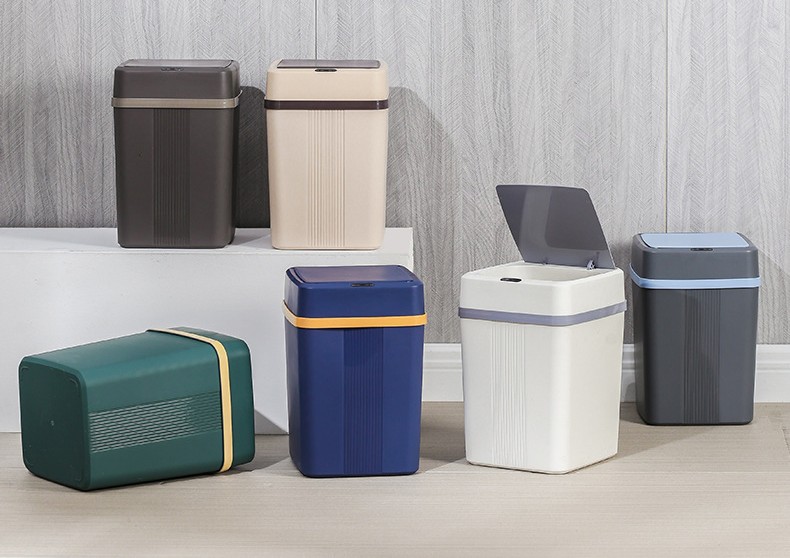
Taking out the trash isn’t the hardest household chore, but it’s one of the most unpleasant and frequent. Smart trash cans are designed to make the job less messy, less smelly, and more automated.
Modern options like the Townew Self-Sealing Trash Can or iTouchless Smart Bin come with features that go beyond a simple lid. Some automatically seal and replace the bag when the can is full, saving you from wrestling with messy liners. Others use motion sensors so you never have to touch the lid, keeping the process more hygienic—especially in kitchens.
Several models also come with odor control systems that neutralize smells, a big relief for households that cook often or have pets. One Amazon reviewer said, “I didn’t realize how much I hated changing bags until this can did it for me—it’s silly but honestly life-changing.”
For busy families, reminders are another hidden benefit. Certain smart bins send alerts to your phone when they’re nearly full, which is surprisingly handy if you have teens who “forget” to take out the trash. In multi-person households, everyone gets the notification—removing the nagging dynamic. The question remains, who shows up first?
Even more advanced setups integrate with smart home ecosystems. Imagine saying, “Alexa, take out the trash,” and having your bin seal itself, ready to be carried out. While it won’t walk to the curb (yet), it’s one less step in a chore chain most people dislike.
The real benefit isn’t just time saved, but mental energy reclaimed. Trash is a chore that interrupts routines at awkward moments—during cooking, late at night, or just as you’re heading out the door. A smart trash solution quietly smooths over those moments, turning an irritating task into something almost invisible.
While these bins cost more than traditional models, many users say the convenience and cleanliness are worth it. For households that prioritize automation, smart trash solutions round out the picture of a home that doesn’t just feel modern—it actively reduces the chores you deal with every day.
Smart Home Hacks vs. Chores Reduced (2025)
| Hack | Main Chore Reduced | How It Helps | Avg. Time Saved per Week |
| Robot Vacuums & Mops | Floor cleaning (vacuuming/mopping) | Automates daily cleaning, handles pet hair, and maps home | 2–5 hours |
| Smart Dishwashers & Laundry Machines | Washing dishes & clothes | Auto-dosing detergent, remote start, cycle reminders | 1–2 hours |
| Voice Assistants (Alexa, Google, Siri) | Micro-chores (switches, reminders, routines) | Hands-free control of lights, appliances, and timers | 30–60 minutes |
| Smart Plugs & Energy Monitoring | Appliance management | Automates coffee makers, irons, and lights; tracks energy | 1–2 hours (including stress saved) |
| Smart Lighting Hacks | Cleaning visibility & light control | Bright cleaning mode, scheduled routines, hands-free on/off | 30–60 minutes |
| Automated Pet Feeders & Fountains | Daily feeding & watering pets | Scheduled feedings, fresh filtered water, app alerts | 3–5 hours (depending on pets) |
| Smart Irrigation Systems | Lawn & plant watering | Automates schedules, adjusts for weather, and sends reminders | 1–3 hours |
| Smart Trash Solutions | Trash management | Self-sealing, odor control, fill alerts, hygienic touch-free use | 30–45 minutes |
Real-Life Feedback & Stories
Smart home hacks don’t just sound good on paper; they’re already changing how people handle chores in real life. From Reddit forums to Amazon reviews, the feedback consistently shows that these devices reduce stress, free up time, and even bring unexpected benefits.
Robot Vacuums & Mops
Pet owners are some of the biggest fans. On Reddit’s r/smarthome, one user shared: “My Roomba runs every day at 9 a.m., and when I get home from work, the floors are spotless. I haven’t touched my old vacuum in months.” Many mention the peace of mind of not having to worry about fur or crumbs piling up, especially with kids or pets.
Smart Dishwashers & Laundry Machines
Busy families often highlight the convenience of app alerts. An Amazon reviewer for an LG smart washer wrote: “I used to forget laundry loads until they smelled. Now I get a ping on my phone the moment it’s done.” Others note that auto-dosing detergent helps avoid waste and cuts down the mental effort of guessing how much to use.
Voice Assistants
Parents frequently talk about bedtime routines being smoother. One family described saying “Alexa, bedtime” to trigger a whole sequence: the TV shuts off, the lights dim, and a nightlight turns on. For elderly users, the feedback is even more touching—being able to control lamps or heating without walking across the room is often described as “life-changing.”
Smart Plugs & Lighting
Users love the hidden time savings. One reviewer mentioned: “I didn’t realize how much time I wasted checking if I left the iron on. Now I just look at the app.” Another highlighted how switching lights to “cleaning mode” made dirt more visible, cutting down the need for double-cleaning.
Automated Pet Care
Pet feeders consistently get rave reviews. A buyer on Amazon wrote: “I don’t panic if I’m late from work—my cat’s dinner is served on time.” Water fountains are also praised for encouraging pets to drink more, while reducing the owner’s daily refilling chore.
Smart Irrigation
Gardeners highlight freedom from constant watering checks. One Reddit gardener said, “My Orbit B-hyve adjusts automatically when it rains. I’ve saved water, and I don’t stress about my lawn drying out.” Indoor plant owners echo the relief of not asking friends or neighbors to water while they travel.
Smart Trash Solutions
Reviews for self-sealing bins often sound surprised. As one buyer put it: “It felt silly to buy an expensive trash can, but now I never deal with gross bag changes. I didn’t realize how much I hated that job.”
Buying Guide – Choosing the Right Smart Home Devices to Reduce Chores
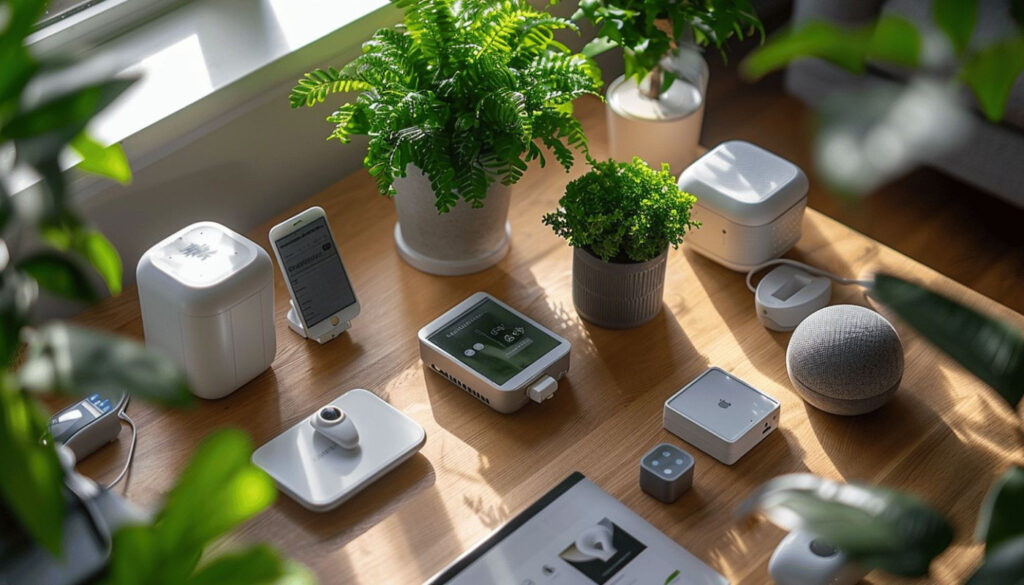
Smart home tech has exploded in recent years, but not every gadget on the shelf will actually save you time, so you have to be wise. Some are flashy but impractical, while others become indispensable once you use them. If your goal is to reduce household chores, here’s what to look for when choosing the right devices.
1. Prioritize Automation Over Gimmicks
The most effective smart devices are the ones that run on their own with minimal input. Robot vacuums, automated pet feeders, and irrigation systems are perfect examples—they handle repetitive tasks in the background. Be cautious of devices that require constant manual tweaks through an app; they’ll add more steps instead of cutting them.
2. Check Compatibility With Your Ecosystem
Are you an Alexa household, a Google Home fan, or an Apple HomeKit user? Make sure your devices fit naturally into your setup. A smart feeder that doesn’t talk to your ecosystem might mean juggling multiple apps, which creates friction instead of convenience. Look for products that support Matter, the new cross-platform standard, for future-proofing.
3. Focus on High-Impact Chores First
Start with the chores that drain the most time:
- Floors: Robot vacuums and mops often save the biggest chunk of hours each week.
- Laundry & Dishes: Smart appliances reduce hands-on effort and prevent mistakes.
- Pet Care: Automated feeders and fountains provide daily relief.
This way, you’ll see real benefits quickly instead of spreading your budget across low-impact gadgets.
4. Consider Ease of Setup & Maintenance
The smartest device is useless if it’s hard to maintain. Look for self-emptying vacuums, feeders with backup batteries, and lighting systems with intuitive apps. Read reviews carefully—many users highlight whether a product is genuinely plug-and-play or requires constant troubleshooting.
5. Think About Safety & Reliability
Devices that plug into high-load appliances (like heaters) should always be UL or CE certified to prevent overheating. With irrigation and pet care systems, check for backup safeguards (like manual controls) in case WiFi drops. Reliability is key—after all, a smart feeder that skips a meal creates more stress, not less.
6. Balance Cost and Value
It’s tempting to go for the most advanced system, but ask yourself: Will this really save me more chores than a budget option? For example, Philips Hue lights offer endless features, but if you only need bright “cleaning mode” lighting, a Govee or Wyze bulb might do the job at half the cost. Invest heavily in core devices (like robot vacuums or laundry machines), and save on accessories.
Final Tip
When in doubt, start small. Try one or two smart devices in areas where chores feel most repetitive. Once you experience the relief of having tasks handled automatically, you’ll quickly see which upgrades are worth it. The right mix of smart home hacks doesn’t just make life easier—it gives you back time, energy, and most importantly, your peace of mind. There’s nothing as priceless as that.
FAQs – Smart Home Hacks That Reduce Chores
1. Do smart home devices really save time on chores, or is it just hype?
They do save time—especially for repetitive tasks. Robot vacuums, for example, can free up 2–5 hours per week by handling daily floor cleaning. Automated pet feeders and irrigation systems remove daily responsibilities like feeding or watering. While some devices are more about convenience than necessity, the right mix of automation can noticeably reduce household workload.
2. What’s the easiest chore to automate with smart devices?
Floor cleaning is usually the first and easiest. Robot vacuums and mops run on schedules with minimal input, keeping your home consistently cleaner. Lighting automation is another simple starter hack—automating “on/off” routines eliminates dozens of small, forgettable tasks each week.
3. Are smart home devices expensive to run?
Most modern smart devices are energy-efficient and don’t add much to electricity bills. Robot vacuums, for instance, use less power than running a traditional upright vacuum. Smart lights are LED-based, so they consume a fraction of the energy of incandescent bulbs. In many cases, they actually save money by optimizing power use (like irrigation systems adjusting for rainfall).
4. Do smart devices require WiFi to work?
Yes, most rely on WiFi for app control, scheduling, and voice assistant integration. However, many also include manual buttons or backup modes, so they still work even if your internet goes down. Some newer devices use Matter or Thread protocols, which improve stability and reduce reliance on WiFi.
5. Are smart home hacks suitable for elderly or non-tech-savvy people?
Absolutely. In fact, many families introduce smart devices for elderly parents to make life easier. Voice assistants are especially helpful, letting them control lights or appliances without moving around the house. Automated feeders, trash cans, and robot vacuums also cut down on physical strain. The key is choosing devices with simple apps or voice control to avoid complexity.
6. Do smart devices completely replace chores?
Not entirely. Smart devices reduce the frequency and intensity of chores rather than eliminating them altogether. For example, a robot vacuum keeps floors tidy between deep cleans, but you’ll still need occasional manual cleaning. Similarly, a smart dishwasher reduces effort but still requires loading and unloading. Think of them as chore-reducers, not chore-eliminators.
7. What’s the best starting point for building a chore-reducing smart home?
Start with one or two devices that target your biggest pain points. For most people, that’s a robot vacuum for daily floor cleaning or a smart plug for automating morning routines. Once you experience the benefits, you can expand into lighting, appliances, and pet care.
8. Are these devices worth the investment?
If you value your time, most smart devices pay off quickly. Even saving just two hours a week adds up to over 100 hours a year—time you can spend with family, hobbies, or simply relaxing. For busy households, parents, or pet owners, the convenience and reduced stress make them well worth the cost.



